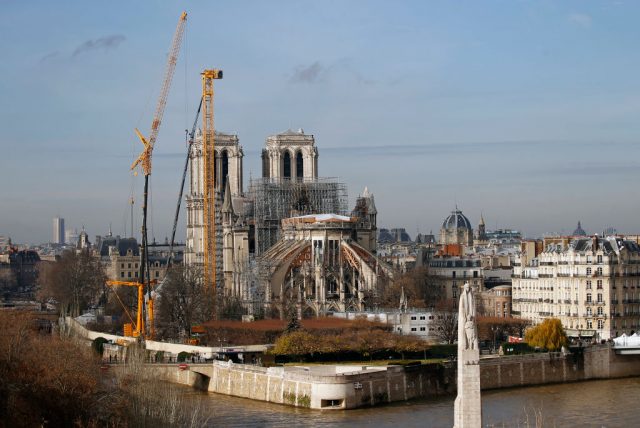Notre Dame was set in the sights of a couple men as the streets of Paris lay bare. One thing that is occasionally identified as a potential problem as the streets empty and people stay isolated in their homes is an increased chance of looting. On the face of it, looting doesn’t really seem as though it should be that much of an issue, since there are still always at least some people out and about, but a recent report from The Art Newspaper says otherwise.
On Tuesday evening, two men were caught in Paris trying to loot stones from Notre Dame Cathedral. The would-be thieves were spotted by guards who subsequently called the police. When the police arrived on the scene, the two men were found hiding under a tarpaulin, and clearly under the influence of adult beverages. With them were a number of small stones that they had taken from the site.

Andre Pinot, a spokesperson for Notre Dame, told reporters that the cathedral has always been a place of fantasy, and that there was a black market for items coming the church. There are stones claiming to be from Notre Dame on sale at online sites such as EBay, although they are fakes. The assumption is that the thieves were going to sell the stones they took on the black market.

Notre Dame Cathedral has been undergoing substantial repair and renovation after it had a devastating fire nearly a year ago. Work on the repairs, however, halted in the middle of March after the French Government began taking steps to slow the spread of covid-19. The thieves were after original stones which had fallen down inside the building.

At the time the repair work was put on pause, the crew was about to begin removing around 250 tons of scaffolding on the structure, which welded together during the fire, according to Smithsonian magazine. Removing it is a key step in the restoration process, as it is necessary to make the site safe to continue working in. Concerns were raised that removal of the scaffolding could cause further damage to the already-fragile building, so a plan was devised that involved supporting the walls from the outside using metal beams, and having technicians be lowered into the site using cranes.

Another of the concerns with regard to the renovations and safety has to do with lead contamination. The roof and spire of the cathedral have over 200 tons of toxic lead that is unaccounted for. Some of that lead is believed to have aerosolized, scattering lead dust in the air. More of it may have polluted the Seine in the form of contaminated runoff.
As it currently stands, anyone who enters the cathedral has to undress and put on paper underwear and safety suits, as well as protective masks. Workers can only stay in there for two and a half hours before coming out to shower and change all their protective clothing in an attempt to protect them from toxic lead exposure.
Related Article: 50% Chance Notre Dame Cannot be Saved says Cathedral Representative
The inability to ensure worker safety in the present circumstances has put an indefinite hold on continuing work at the cathedral, the next stage of which would have been to deal with the scaffolding. Work came to a standstill and the site was closed, giving the would-be looters their opportunity to attempt to steal and sell a priceless piece of Paris history.
